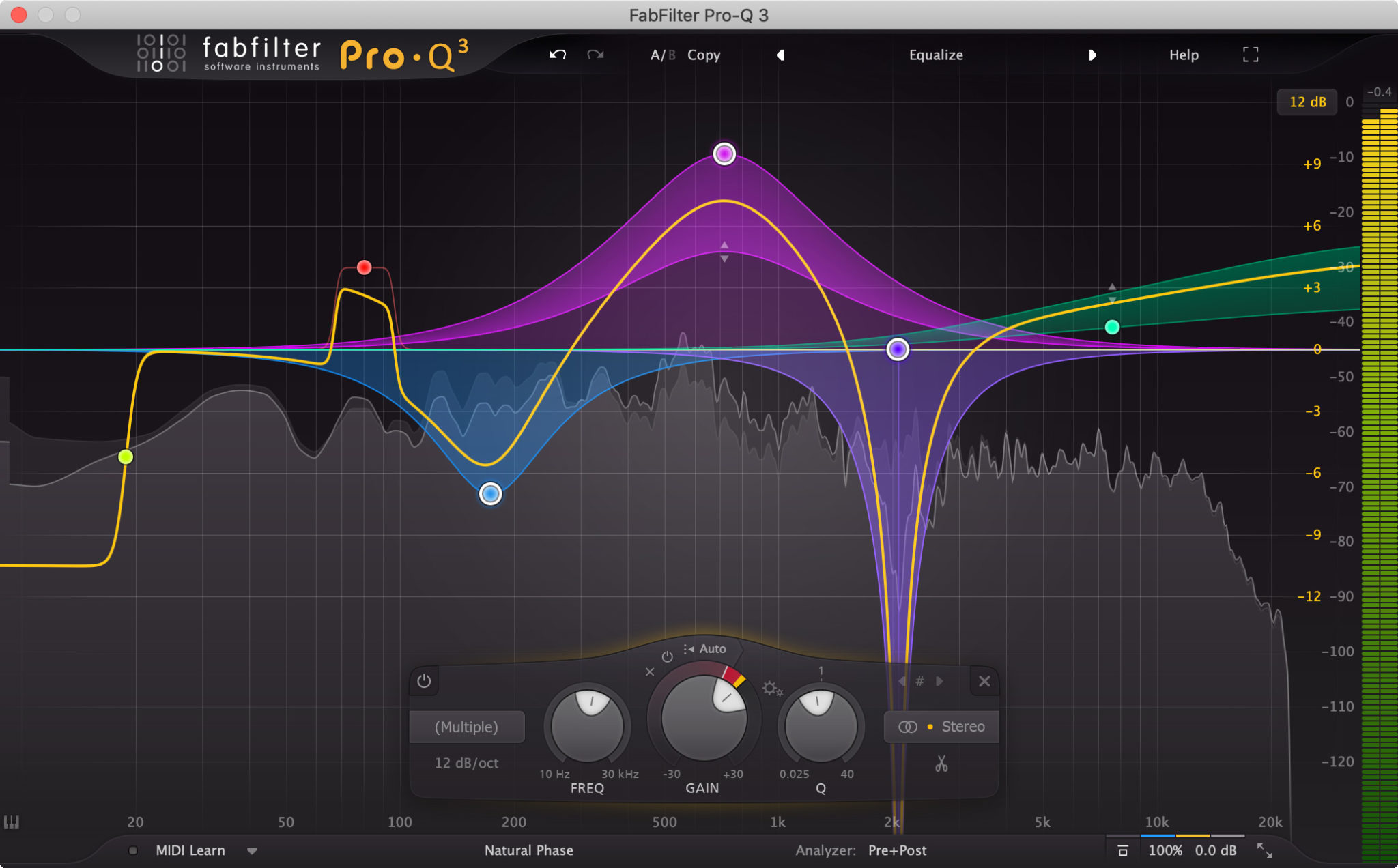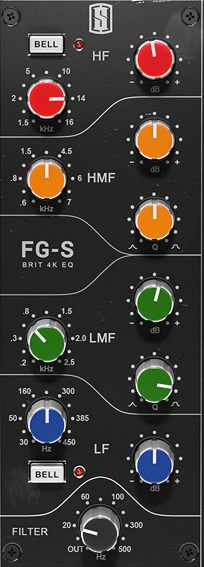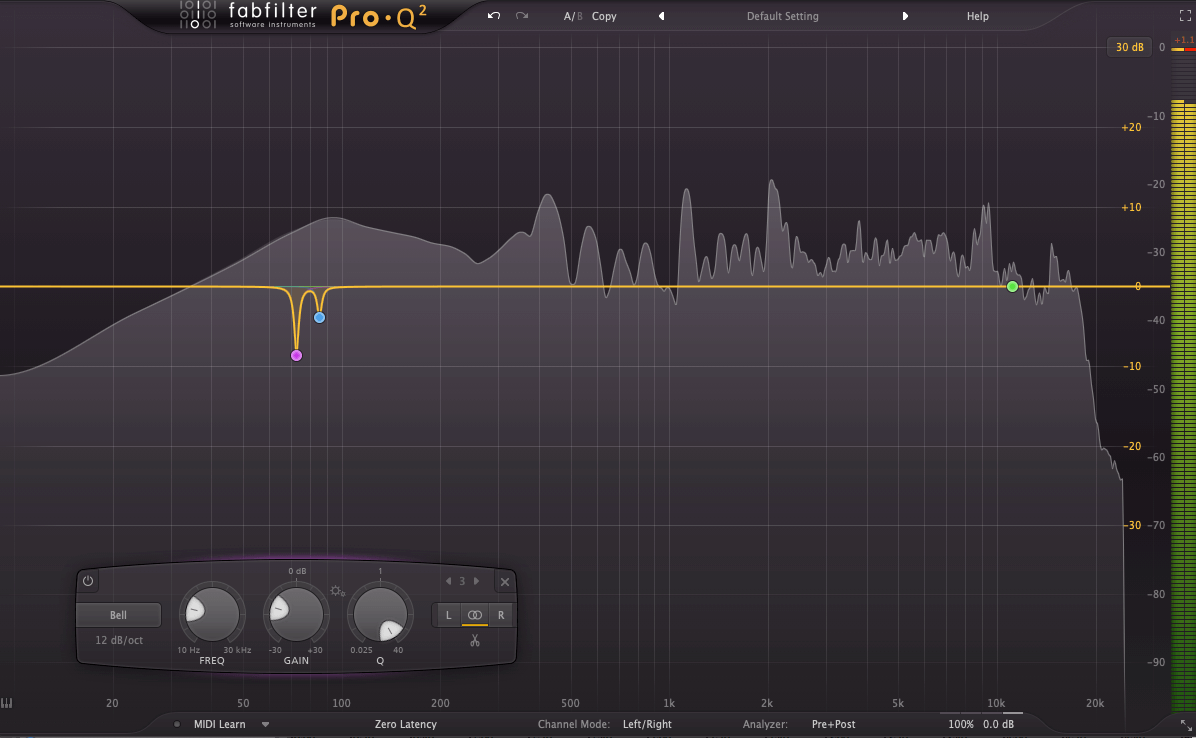Your Cart
Your cart is empty
There are no items in your cart
Keep shopping

Included Software:
EQ is one of the fundamental components of mixing and music production. Without a solid grasp of EQ, it’s unlikely you’ll be able to pull of professional mixes or create winning tracks. Adam Hignell sorts the wheat from the chaff with 5 common EQ mistakes to avoid.

While seemingly a simple process of cutting or boosting frequencies, EQ can be a cruel mistress. A couple of minor mistakes and you’re very quickly in muddy mix land. Or, equally as bad, a badly-balanced mix that’s hard to listen to, or suddenly turns int a hot mess when played in the club.
There’s a rumour mill at work in the audio production world, too. Scrool through any production forum or group, and you’ll probably hear all kinds of ‘wonder tricks’ for perfect mixes. But, as in life, there’s rarely a wonder trick or fast-track, and every decision should be correct for the context.
The following mistakes can lead to poor mixes and yet are unbelievably common! I could condense all 5 into one simple sentence: THINK ABOUT WHAT YOU’RE DOING!
Mixing at a million decibels can be pretty thrilling (well, not so much for your neighbors), but while it may feel like you’re immersed in the mix, you’re scientificaly proven to be hearing a reduced frequency range. High frequencies are lost at super high volumes – fact – and you’ll spend time adding highs that were there all along. Not to mention the fact that your ears will tire faster, and potentially be damaged, long-term. We’ve all done it, but please, look after your listening gear.
Just because your EQ has 8 bands, doesn’t mean you need to use them all. Just because it has 6 filter types, doesn’t mean you need to use them all, either. It’s great to have options, but it’s easy to feel like you’re EQing better by EQing more. In reality, if you’re not answerng questions that your audio directly poses you, you’ve got a ticket to Mistakeville. Think about every decision you make – never do something because you think you should, or you saw someone on a Youtube video do it. Instead, ask yourself if you can hear a problem, and if you think yur next action has a realistic chance of solving it. And if you don’t know, move on, and come back to it later. It’s much easier to return with fresh ears and make a new decision, than return and try and unpick EQ mistakes made at random.
It doesn’t matter how much talent you have if you can’t hear your audio properly. And my word, is this a common problem. Many producers are happy to spend big on plugins and keyboards, but fail to consider the acoustic environment they’re working in. Very few spaces are naturaly perfect – hard floors, reflective surfaces, bass traps, uneven celings… you name it, there’s a way that your listening space can try and mess with your mixing.
Fortunately, solutions are available for almost all spaces, ranging from the inexpensive (AKA ‘throwing soft furnishings at the problem’) to the specialist (acoustic surveys and bespoke room treatment, mainly). In truth, this issue is one of the most misunderstood in the audio engineering world, and you’ll hear all kinds of crazy suggestions with a cursory Google search (no, egg cartons do not really help). I recommend starting with Sound on Sound’s easy to understand and thorough guide to getting started..
Then, we have to talk about monitoring. While professional studio monitors can cost tens of thousands of dollars, there are plenty of really good options at a raction of that, and plenty in between. Assuming that I’m not addressing readers with a cool $10K to drop on monitors, I’ll simply say that budget monitors do not mean budget results. Some are excellent, such as the popular (yet slightly dull to my ears) KRK Rokit series, Mackie CR-3, Yamaha HS5, and my personal favorite, the ADAM Audio TD-7.
It’s well worth investing what you can afford into studio monitors and acoustic treatment, since this will help you get a true reproduction of the audio you’re trying to EQ. You can’t fix what you can’t hear.
Low end is perennially hard to mix, predominantly because the human ear doesn’t pick it up with the same clarity as it does with mids and highs. Getting them mixed correctly, though, is pretty vital. If the bass and low end doesn’t sit together beautifully and in balance with the rest of the track, it can cause distortion, and in many cases a surprisingly quiet mix.
Again, you can’t mic what you can’t hear, so it’s worth investing in a subwoofer if you can afford it (and your neighbors don’t call the cops). Subwoofers specialise in low range audio (from as low as 20 Hz up to around 140 Hz). I can’t argue with Lifewire’s decision to award the Polk PSW505 with the top spot in this category, and at $300 they’re kind of affordable…
When my son was born, my home studio suddenly needed to make a lot less noise, so I invested in a high-end pair of headphone monitors. I’m not saying it was the same as referencing in a properly treated room with decent studio monitors, but I got accustomed to the responses of my new headphones, and was able to mix several commercial records using them, with fairly good results. But, despite having excellent monitors (Sennheiser HD600s, if you’re curious) I couldn’t in all honesty recommend headphones for mixing/EQing in full. I’d always want to do my final mixes in my studio. However, good headphones can come pretty close if you learn their limitations, and can be a really great solution for those living in quiet spaces.

It’s pretty handy having access to a highly detailed image of your sounds’ frequency performances. Spectral analysers are awesome. But, your ears are awesom-er. Trust them, learn to really listen with them, and you’ll make better EQ decisions. One good way to practice this, is to use shelving EQs or analog emulations to perform EQ processes. By taking away that spectral analysis crutch, you’ll force your ears to listen, which can only make you a better mixer.
Everyone loves bass. It’s the special sauce that gets the party started and the club jumping. But most us have a tendency to overload the bass in search of that bass-bin bothering magic.
Many sounds have a fundamental and a bunch of higher harmonics that round out the sound and provide its character. But below the fundamental, it’s often just bassy tones that fight with your bass instruments. Roll them off on almost every track below the fundamental, and you should find a great deal of space opens up in the low end for clear, powerful bass-lines and drums.

The strange thing is, oftentimes removing bass can actually bring out sparkly mids and highs and emphasise the bass you left in. Knowing how much to leave in is one of the dark arts, but so long as you’re not just whacking more in when in doubt, you’ve a good chance of nailing it.